You’d think we’d learn . . . . these long flights suck. Some time ago, we made a solemn promise not to let travel time exceed 15% of the total trip time. Well we failed this trip, allowing travel to eat up 30% of our allotted time . And to Paraguay no less. I mean no disrespect to the country and its people, but there’s not a significant tourist trade. Our mission, however, was to attend a wedding and the travel time was irreverent the groom was a very special young man. Alejandro attended high school in the United States under a Rotary student exchange program. After his year in Astoria, he returned several time to visit and maintain important relationships he had gained. He even traveled with his fiancee to the US to introduce her to the country and to his many friends. So, when we received a wedding invitation, there was no question that we would go regardless of how much time it took to get there. The thought of a large wedding, everybody speaking Spanish, and the groom’s attention being taken up by such a large gathering, left us wondering what we would be doing, particularly in Paraguay. Well . . . good joss prevailed from our perspective.
Two weeks before the wedding, the best friend of the bride was involved in an accident, and while she fully recovered, the wedding was delayed two months. Since we had purchased our tickets and made all our reservations we decided to go anyway for it wasn’t the wedding, it was to see the youngsters and meet their families. And selfishly, by going before the wedding, we’d have Alejandro and his family all to ourselves. It was wonderful, and we learned so much about Paraguay, its people and Alejandro’s family.
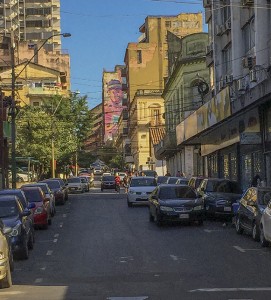 Alejandro lives in Encarnacion, a 5.5 hour drive from Asuncion and true to Paraguayan hospitality, he drove to pick us up, a quick tour of the city, then hoofed back home.
Alejandro lives in Encarnacion, a 5.5 hour drive from Asuncion and true to Paraguayan hospitality, he drove to pick us up, a quick tour of the city, then hoofed back home.
Before heading out, we had lunch at a popular cafe where everyone sat at a long bar. Very authentic and a representative working class establishment. Interesting menu including lots of vegetables and the house specialty (see inset of photo below). Don’t remember what it was called but it was as good as it looked.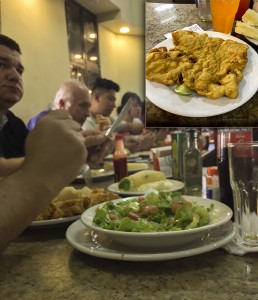
We left mid afternoon taking almost 6 hours to drive 228 miles to Encarnacion. Road conditions weren’t bad, traffic wasn’t too heavy, just a two lane road.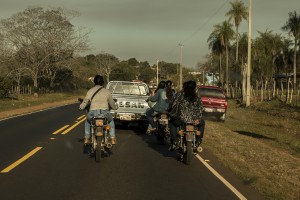
We stopped just after sunset for a refreshment and pit stop.
Encarnacion population is a mere 127,000, founded in 1615 on the north bank of the Paraná River across from Argentina on the south bank. The river Much of the length of the Paraná is navigable, and the river serves as an important waterway linking inland cities in Argentina and Paraguay with the ocean, providing deepwater ports in some of these cities. The construction of enormous hydroelectric dams along the river’s length has blocked its use as a shipping corridor to cities further upstream, but the economic impact of those dams offsets this. The Yacyretá Dam and the Itaipu Dam on the Paraguay border have made the small, largely undeveloped nation of Paraguay the world’s largest exporter of hydroelectric power according to Wikipedia. Construction of the Yacyreta Dam had a profound affect on Encarnacion. The dam was fully operational in 1998 but the water level was 23 feet less planned resulting in the dam operating at 60% of capacity. The level of the dam was raised and another 1,650 square kilometres (640 sq mi) of land surface was covered, affecting more than 50,000 people significantly affecting the city along the river.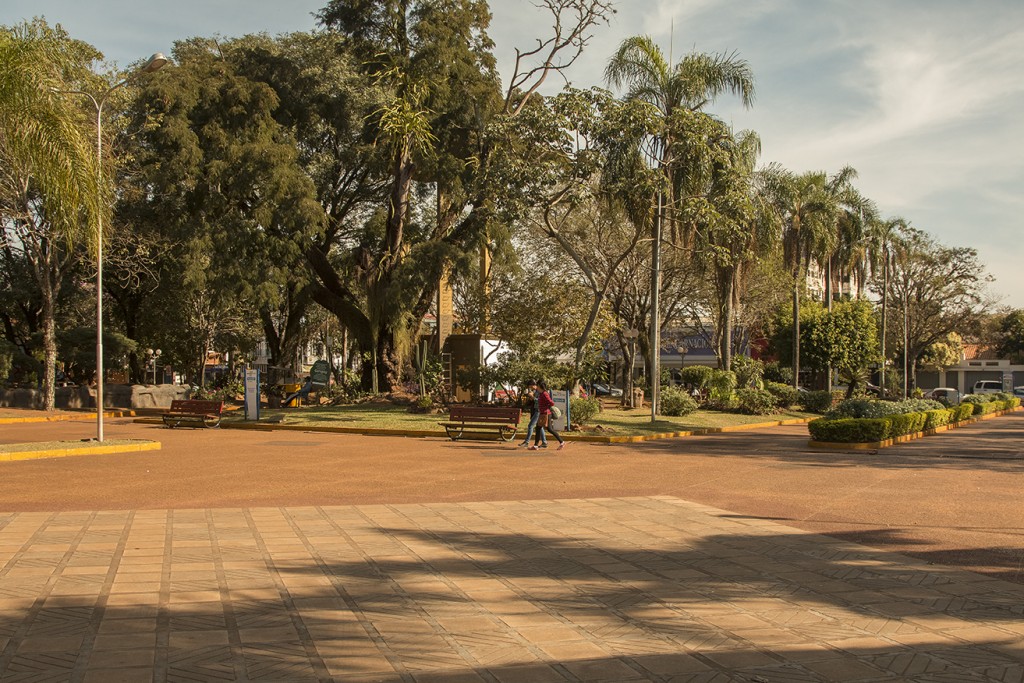
Much of the city remained above the water level as seen in the town square above.
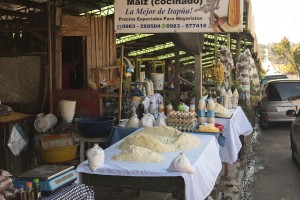 Every town we’ve visited over the years includes checking out the local market. Something about seeing what locals consume is fascinating. This market was across the street from Alejandro’s apartment and it specialized in hand grinding wheat.
Every town we’ve visited over the years includes checking out the local market. Something about seeing what locals consume is fascinating. This market was across the street from Alejandro’s apartment and it specialized in hand grinding wheat.
Out and about town and the classic use of a simple motor cycle to transport a myriad of goods.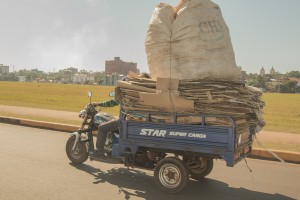
It was then out to Alejandro’s grandparents for a family birthday luncheon. They lived on the outskirts of the city and had developed many solar devises over a period of 20 years. The following example was pretty neat. 
For dinner, there was a special treat. A good friend of Alejandro was a professional cook specializing in open fire cooking. The following leaves little doubt – turn your volume up – you can almost smell the cooking.
The following day we visited the Jesuit Mission of Jesus de Tavarangue, a World Heritage Site. The mission was founded by Jesuit missioners during the colonization of South America in 1609.
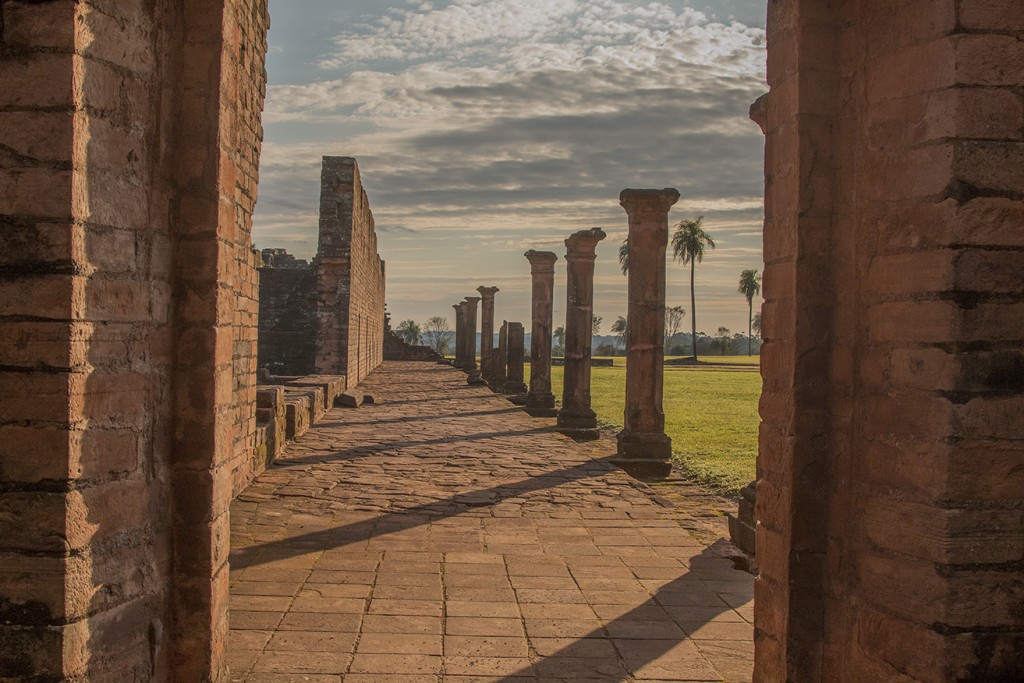 Paraguay was discovered in 1524. Its development in political, economical and social matter was a slow process, scarred by armed conflicts between Spanish conquerors and natives, who fought to preserve their territory.
Paraguay was discovered in 1524. Its development in political, economical and social matter was a slow process, scarred by armed conflicts between Spanish conquerors and natives, who fought to preserve their territory.
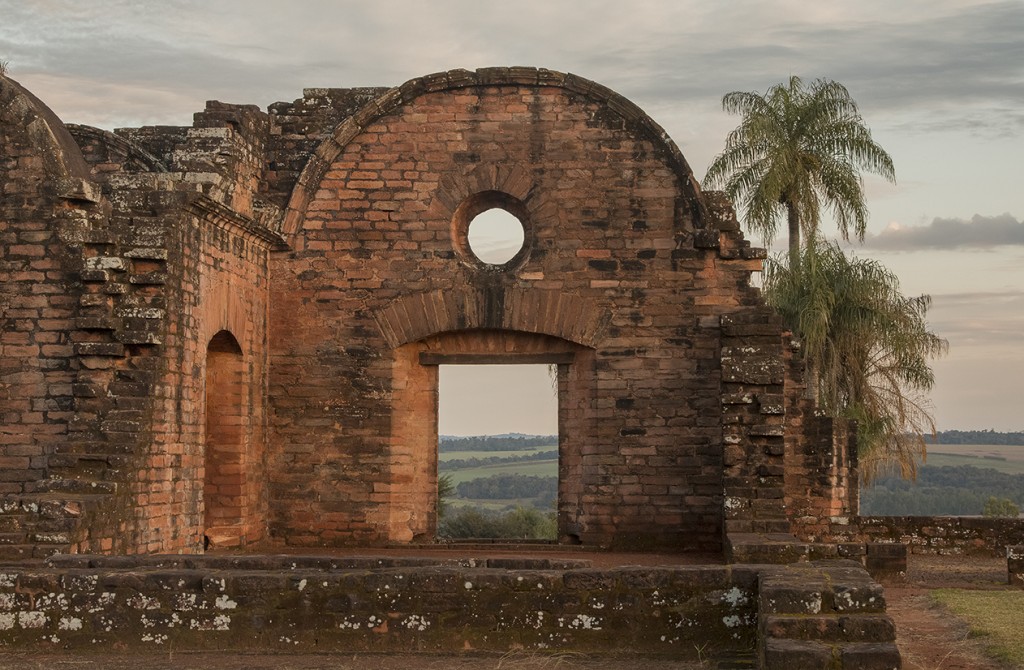 By 1590 the Spanish had founded 10 cities and 40 colonies in South America. The natives were forced to be at their service (Encomienda system).
By 1590 the Spanish had founded 10 cities and 40 colonies in South America. The natives were forced to be at their service (Encomienda system).
The Spanish King tried to improve their quality of life by making some decrees for their protection but it was difficult to have a real system of control to make sure they were obeyed. The system of “Encomienda” gave place to many insurrections of the natives.
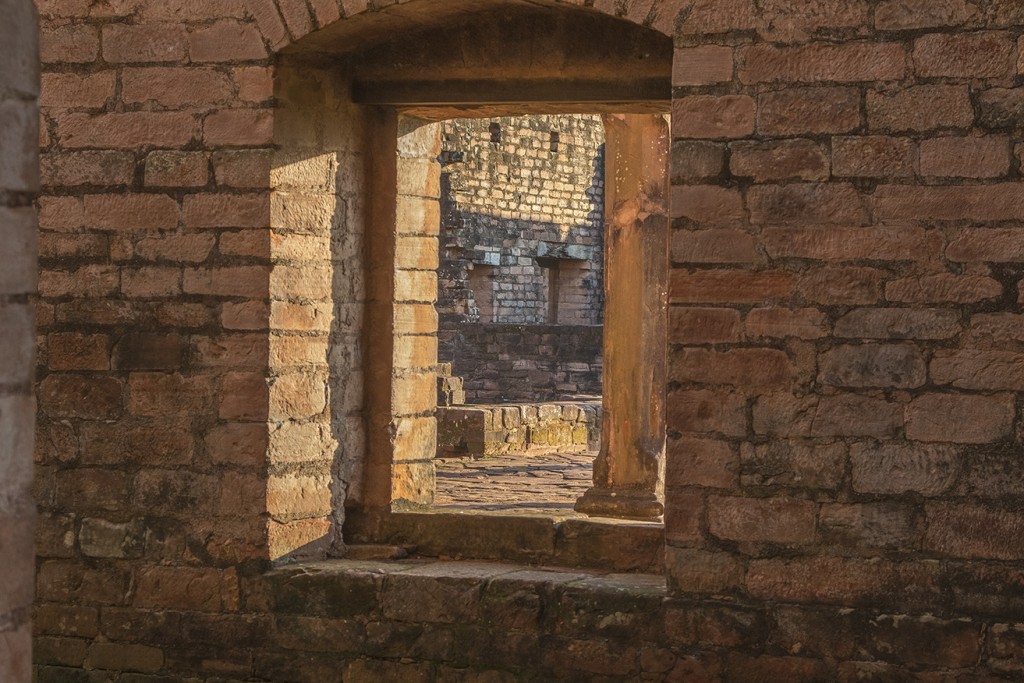 It was not until the Missions were established that there was a real improvement in the living conditions of the natives. The Jesuits started the evangelization and building of towns or Missions in the region of Misiones and Itapúa Departments in Paraguay.
It was not until the Missions were established that there was a real improvement in the living conditions of the natives. The Jesuits started the evangelization and building of towns or Missions in the region of Misiones and Itapúa Departments in Paraguay.
The first thing they did was to form towns that were self-sufficient in the areas inhabited by the natives and a study of the Guaraní language they spoke to make a writing structure (because the Guaraní people did not write their language). The missioners not only imparted knowledge about religion, but also determined the rules of public order, culture, education and society, which had great influence in the later development of Paraguay. This group of missioners founded about 30 Missions in territories that nowadays belong to Paraguay, Brazil, Argentina and Bolivia.
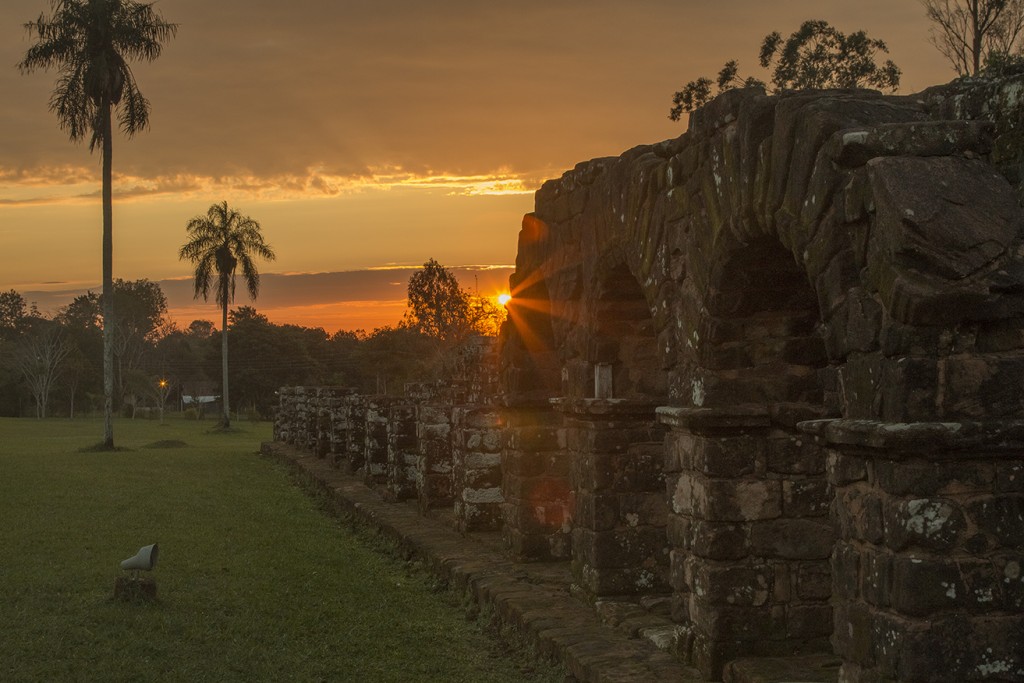 In 1767, the Jesuits were expelled from the Guaraní missions and the Americas by order of the Spanish king, Charles III, and the era of Jesuit reductions ended. The reasons for the expulsion related more to politics in Europe than the activities of the Jesuit missions.
In 1767, the Jesuits were expelled from the Guaraní missions and the Americas by order of the Spanish king, Charles III, and the era of Jesuit reductions ended. The reasons for the expulsion related more to politics in Europe than the activities of the Jesuit missions.
